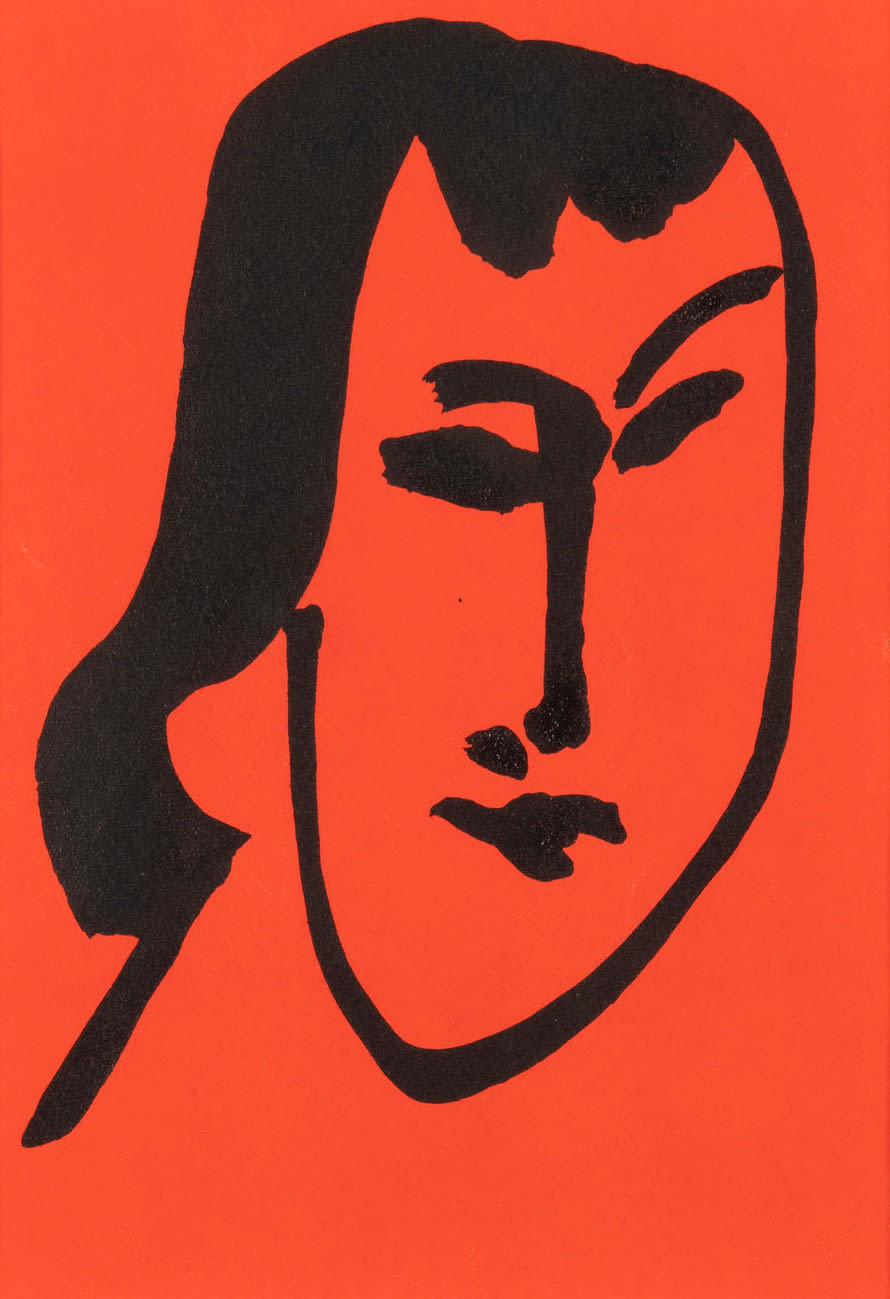Henri Matisse
Tête, c.1951
Gouache, brush and India ink on paper
8 1/2 x 5 1/4 in, 21.5 x 13.4 cm
Sold
“rebellions led me to study separately each element of construction: drawing, colour, values, composition; to explore how these elements could be combined into a synthesis without diminishing the eloquence of...
“rebellions led me to study separately each element of construction: drawing, colour, values, composition; to explore how these elements could be combined into a synthesis without diminishing the eloquence of any of them by the presence of the others, and to make constructions from these elements with their intrinsic qualities undiminished in cominbation; in other words, to respect the purity of the means”
Henri Matisse, 1951
Henri Matisse painted ‘Tête’ in 1951, towards the end of his life. By this time he was one of the most celebrated artists in the world, having achieved international acclaim through a plethora of exhibitions, including a retrospective at The Museum of Modern Art, New York the same year.
Suffering from terrible arthritis in the late 1940s / early 1950s, Matisse developed new ways to be creative. He painted paper with gouache and then cut out shapes from that paper or made brush drawings on it, such as in the present work.
In ‘Tête’ the page has been cut to the artist’s desired scale, Matisse regularly worked in this manner in the early 1950s. Using this technique in such gouaches as ‘The Thousand and One Nights’ (The Carnegie Museum of Art) and ‘Large Decoration with Masks’ (National Gallery of Art, Washington).
In ‘Tête’, Matisse pares back the face to its most simplistic form, a testament to his ability to capture the nuances of facial expression with a few strokes. Although the purity of the calligraphic line in the drawing is seemingly executed with effortless ease, Matisse strove tirelessly to create the perfect balance of form through simplicity. ‘Tête’ is a testament to the artist’s application of flowing lines, once expressing how “my line drawing is the purest and most direct translation of my emotion. The simplification of the medium allows for that”.
Matisse’s line drawings from this period are highly revered, with a number now being in such museum collections as the Metropolitan Museum of Art, New York (‘Large Face (Mask)’, 1952), Museé d’Orsay, Paris (‘Grande tête’, 1951) and Centre Georges Pompidou, Paris (‘Nu aux oranges’, 1952-3).
Henri Matisse, 1951
Henri Matisse painted ‘Tête’ in 1951, towards the end of his life. By this time he was one of the most celebrated artists in the world, having achieved international acclaim through a plethora of exhibitions, including a retrospective at The Museum of Modern Art, New York the same year.
Suffering from terrible arthritis in the late 1940s / early 1950s, Matisse developed new ways to be creative. He painted paper with gouache and then cut out shapes from that paper or made brush drawings on it, such as in the present work.
In ‘Tête’ the page has been cut to the artist’s desired scale, Matisse regularly worked in this manner in the early 1950s. Using this technique in such gouaches as ‘The Thousand and One Nights’ (The Carnegie Museum of Art) and ‘Large Decoration with Masks’ (National Gallery of Art, Washington).
In ‘Tête’, Matisse pares back the face to its most simplistic form, a testament to his ability to capture the nuances of facial expression with a few strokes. Although the purity of the calligraphic line in the drawing is seemingly executed with effortless ease, Matisse strove tirelessly to create the perfect balance of form through simplicity. ‘Tête’ is a testament to the artist’s application of flowing lines, once expressing how “my line drawing is the purest and most direct translation of my emotion. The simplification of the medium allows for that”.
Matisse’s line drawings from this period are highly revered, with a number now being in such museum collections as the Metropolitan Museum of Art, New York (‘Large Face (Mask)’, 1952), Museé d’Orsay, Paris (‘Grande tête’, 1951) and Centre Georges Pompidou, Paris (‘Nu aux oranges’, 1952-3).
Provenance
Estate of the artistPierre Matisse, New York
Private Collection (by descent from above)



